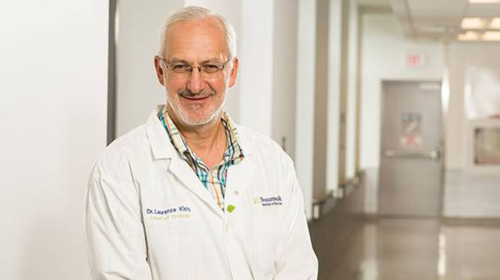One of the most difficult decisions for any man with prostate cancer is deciding what treatment would be best for them. Of course, they take advice from their urologist, but in my experience many also seek out information themselves, looking to established research and charities like Prostate Cancer UK for information on what treatments are the most effective.
This is why the recent results of the UK-based ProtecT trial have received a huge amount of attention in the media globally in the past few days since publication of the trial’s results in the New England Journal of Medicine. The trial identified 82,429 suitable men in the UK aged 50-69 years who had a PSA test between 1999 – 2009. Of these, 2,664 men were diagnosed with localised prostate cancer and 1,643 agreed to be randomly assigned active monitoring, radiotherapy or surgery.
The study found that after 10 years:
- 1% of men had died of prostate cancer;
- there was no difference in the death rate between monitoring, radiotherapy or surgery;
- men who had radiotherapy or surgery had a third of the rate of metastasis (the spread of the cancer) compared to men who just had monitoring.
What does this mean for men with prostate cancer in 2016?
In order to be able to interpret the results, it is important to look at the degree of cancer of the men enrolled into the ProtecT study. Roughly 75% of men had low-risk features: the average PSA was 4.6, 77% had Gleason 6 tumours and 76% had a normal-feeling prostate on rectal examination. In other words, 75% of men in the study had very favourable (early stage and slow-growing) prostate cancer.
In 2016, these men would be offered active surveillance as their default treatment option. So, we should perhaps not be surprised that the men who had radiotherapy and surgery in the trial behaved in a very similar way to the men who had monitoring alone, as in the current era and according to NICE guidelines on prostate cancer, 75% of these men would be offered monitoring anyway.
The results of other studies

Dr Laurence Klotz
The ProtecT study confirms the results of the longest-running study of active surveillance for men with prostate cancer, from Dr Klotz’s group in Toronto, Canada. This showed in 2014 that the death rate from prostate cancer in this closely-monitored group was 1.5% and the metastasis (distant spread of the cancer) rate was 2.8 at 6.4 years’ follow-up. These figures are a concern, since the patients in this study were under very close follow-up and had the most favourable prostate cancer characteristics.
What these figures, and the results of the ProtecT study show, is that active surveillance for prostate cancer is not risk-free. There is a higher chance of the prostate cancer spreading than if the patient were to undergo active treatment such as radiotherapy or surgery.
How do I use this information to decide between active surveillance and active treatment?
Firstly, active surveillance is only suitable for men with a small volume of Gleason 6 prostate cancer or a very small volume of Gleason 7 (3+4 only, not 4+3) cancer, and even then only if it is localised.
If you fit into these two categories, then you need to decide what risks you are prepared to take: the risks of the potential side-effects of active treatment or the risks of active surveillance. Some of the risks of treatment can be reduced by choosing where and who delivers the treatment and what technique is used. Remember that if you fall into this group that you should have plenty of time to decide what is best for you, and you shouldn’t feel pressured into making a quick decision. You might want to consider using a test, such as one of the many genomic predictors of the behaviour of prostate cancer: Prolaris, Oncotype DX, the 4K score or the Stockholm-3 test, to help you decide and, if you do, you should discuss this with your urologist. Good luck.

